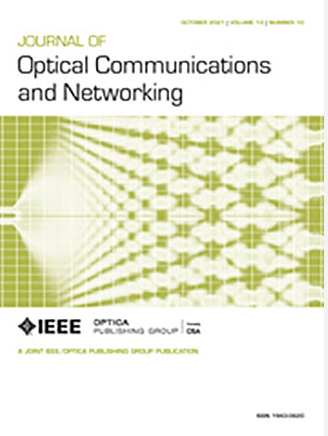Proactive congestion control for fast switchover and optical path at mobile midhaul utilizing optimized parallel traffic prediction with multi-thread and multi-processing procedures
IF 4.3
2区 计算机科学
Q1 COMPUTER SCIENCE, HARDWARE & ARCHITECTURE
引用次数: 0
Abstract
According to the 3rd Generation Partnership Project, it is necessary to keep end-to-end latency to less than 5 ms in 5G mobile networks to achieve remote applications that replace on-site work and operations. The challenge here is that the bursty traffic (e.g., video) abruptly changes on a short timescale. Bursty traffic has an instantaneous high bitrate, which can exceed the link rate of the mobile midhaul (MMH) and thereby cause congestion, leading to an increase in latency. We propose a proactive congestion control method that performs parallel prediction of distributed unit (DU) traffic and fast switchover of the central unit (CU) and optical path in the MMH. Since the processing load of traffic analysis increases in accordance with the number of DUs, the CPU used for prediction becomes overloaded when many DUs are aggregated. This leads to concerns that the prediction cannot be completed in advance, that the timing of control is shifted, and that congestion occurs when switching is performed, thereby increasing the latency. The key idea of the proposed method is to optimize the number of CPU cores and threads for parallel prediction of the DU. To evaluate its feasibility and effectiveness, we experimentally optimized the number of CPU cores, thread allocations, and prediction periods and then estimated the maximum number of simultaneous predictions. The experimental results for a simple condition where video traffic and background traffic are mixed show that our prototype controller successfully achieved a latency at the MMH as low as 1 ms with appropriate congestion control. Our findings demonstrate the latency reduction effect of the proposed congestion control method for MMH in an aggregated DU configuration for applications with severe latency requirements such as remote control.基于多线程和多处理过程的优化并行流量预测的移动中程快速切换和光路的主动拥塞控制
根据第三代合作伙伴计划,在5G移动网络中,为了实现取代现场工作和操作的远程应用,有必要将端到端延迟保持在5ms以下。这里的挑战是突发流量(如视频)在短时间内突然变化。突发流量具有瞬时高比特率,可能超过MMH (mobile midhaul)的链路速率,从而引起拥塞,导致延迟增加。我们提出了一种主动拥塞控制方法,该方法对分布式单元(DU)流量进行并行预测,并在MMH中快速切换中央单元(CU)和光路。由于流量分析的处理负载会随着du数量的增加而增加,所以当du数量过多时,用于预测的CPU会过载。这会导致无法提前完成预测,控制时间发生偏移,以及在执行交换时发生拥塞,从而增加延迟。该方法的核心思想是优化CPU核数和线程数,以实现DU的并行预测。为了评估其可行性和有效性,我们通过实验优化了CPU核数、线程分配和预测周期,然后估计了同时预测的最大数量。在视频流量和背景流量混合的简单条件下的实验结果表明,我们的原型控制器在适当的拥塞控制下成功地实现了低至1 ms的MMH延迟。我们的研究结果表明,对于具有严重延迟需求的应用程序(如远程控制),在聚合DU配置中,提出的MMH拥塞控制方法可以减少延迟。
本文章由计算机程序翻译,如有差异,请以英文原文为准。
求助全文
约1分钟内获得全文
求助全文
来源期刊
CiteScore
9.40
自引率
16.00%
发文量
104
审稿时长
4 months
期刊介绍:
The scope of the Journal includes advances in the state-of-the-art of optical networking science, technology, and engineering. Both theoretical contributions (including new techniques, concepts, analyses, and economic studies) and practical contributions (including optical networking experiments, prototypes, and new applications) are encouraged. Subareas of interest include the architecture and design of optical networks, optical network survivability and security, software-defined optical networking, elastic optical networks, data and control plane advances, network management related innovation, and optical access networks. Enabling technologies and their applications are suitable topics only if the results are shown to directly impact optical networking beyond simple point-to-point networks.

 求助内容:
求助内容: 应助结果提醒方式:
应助结果提醒方式:


